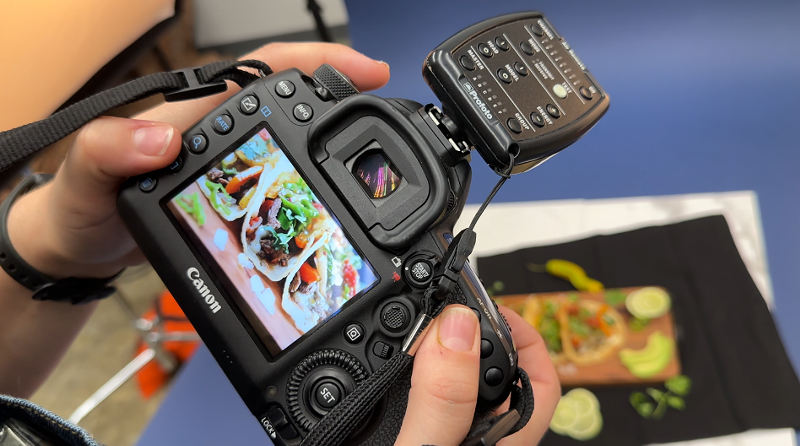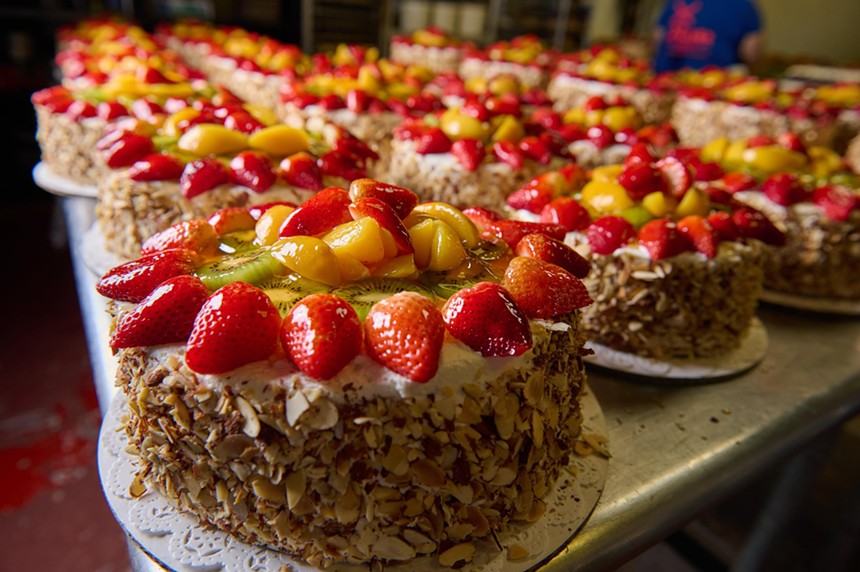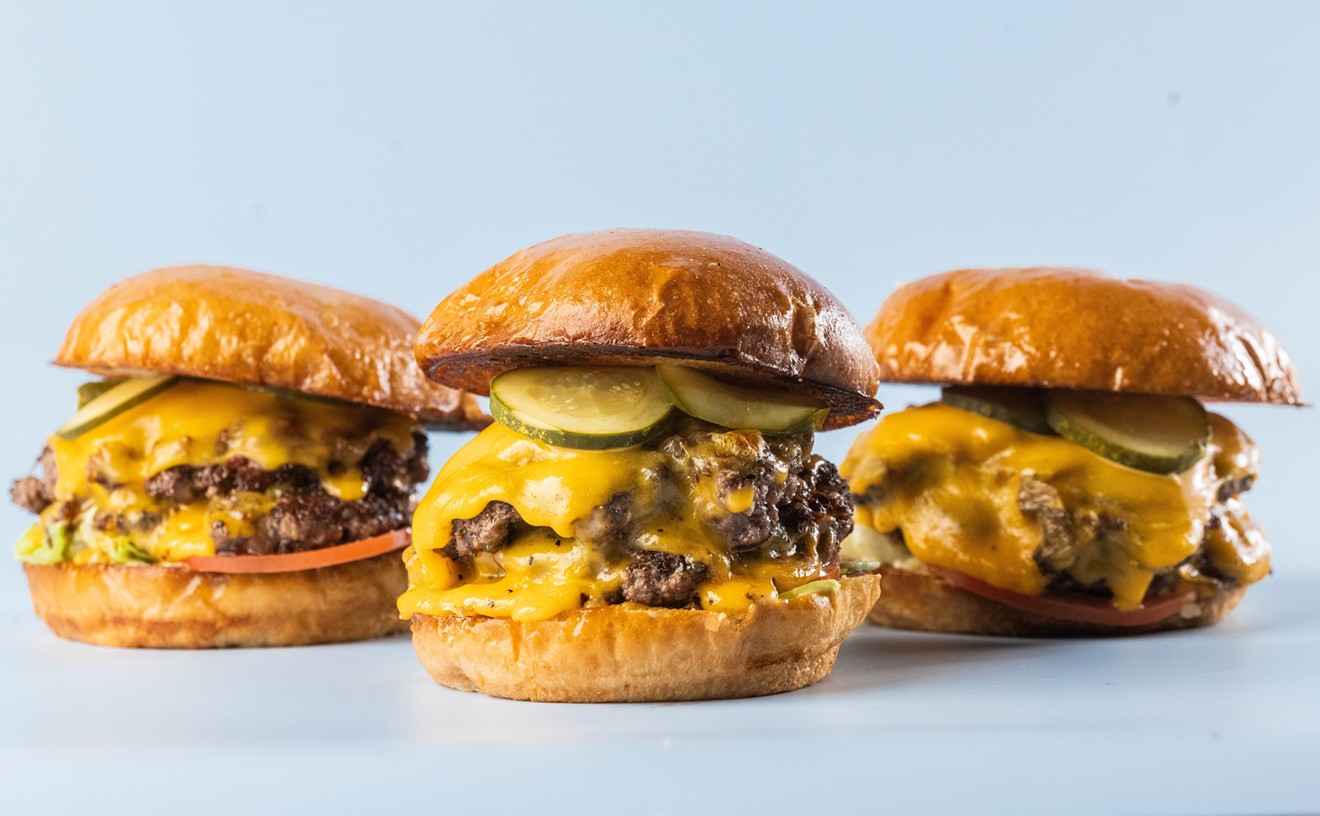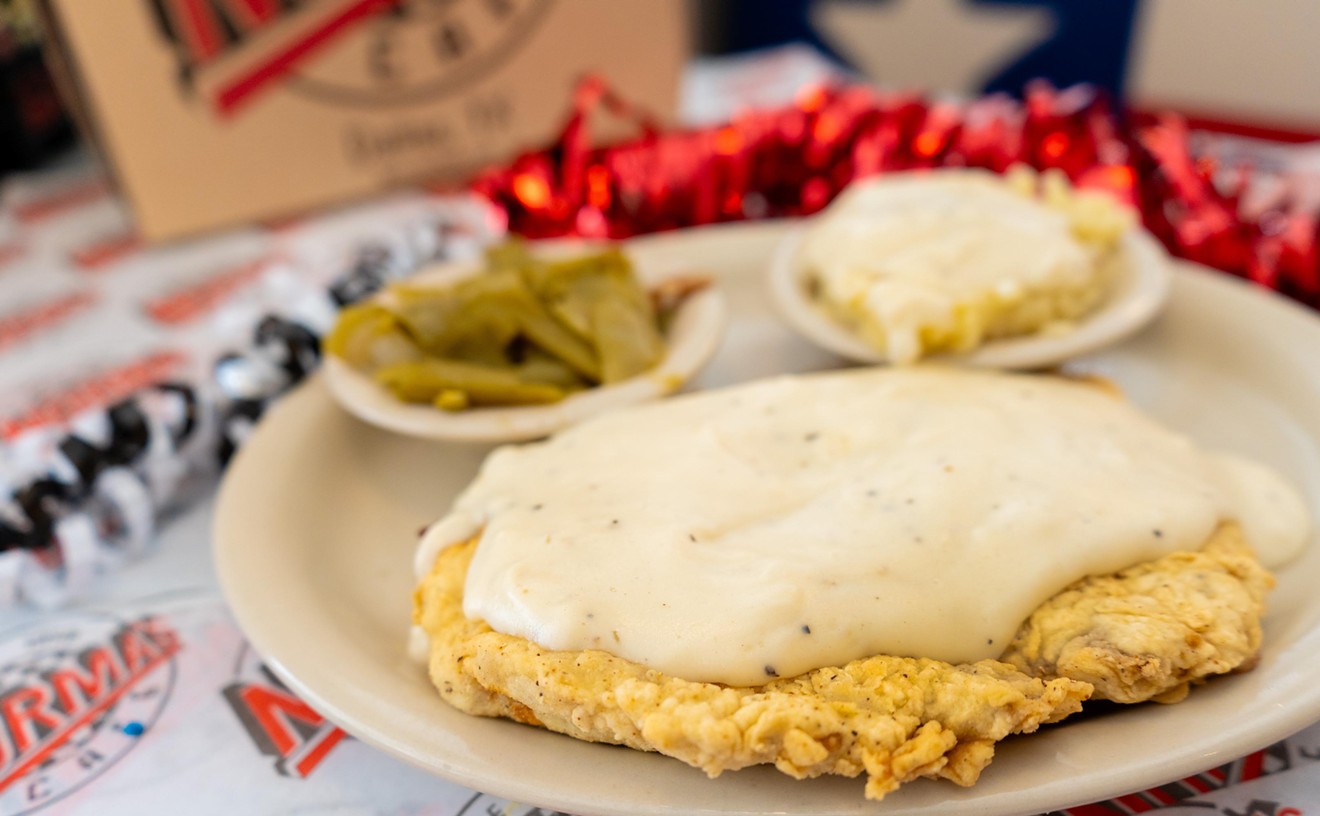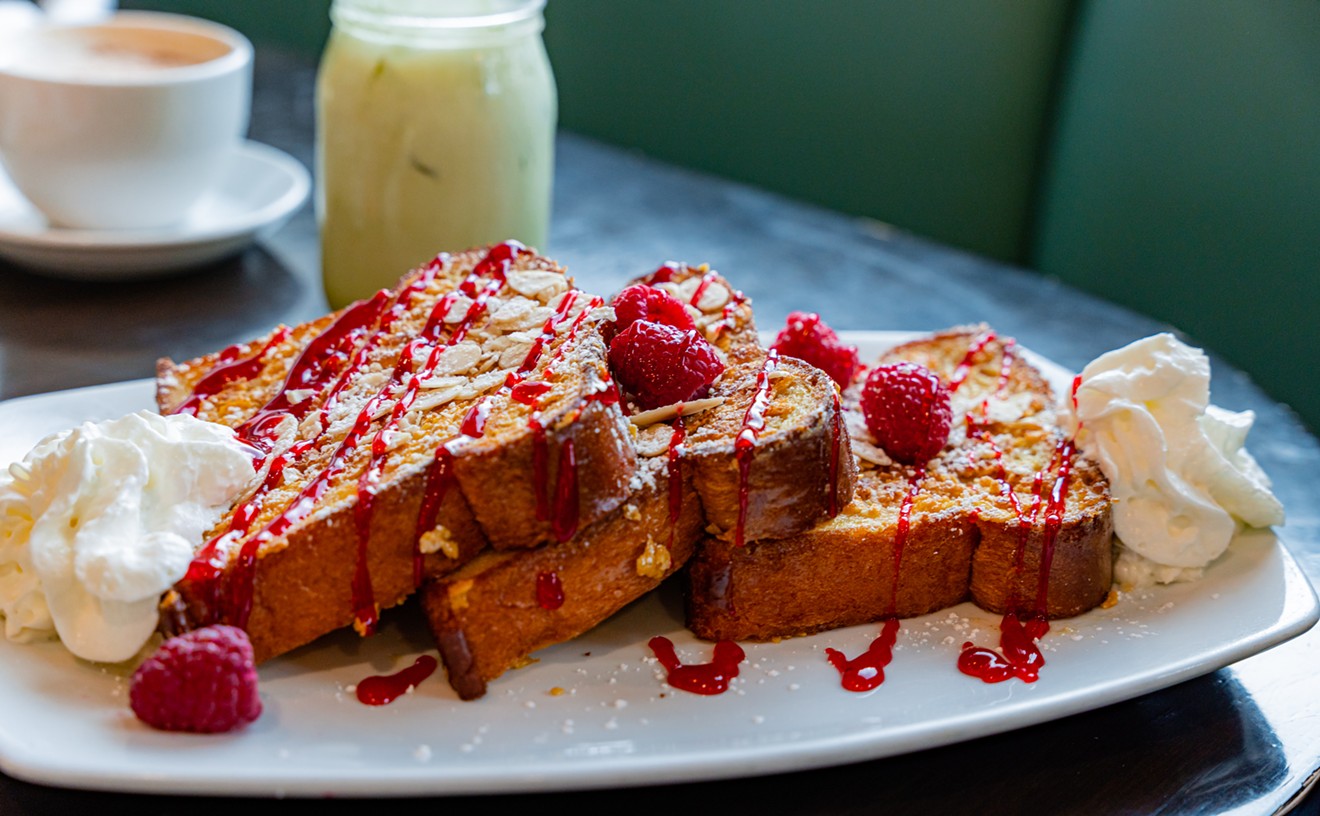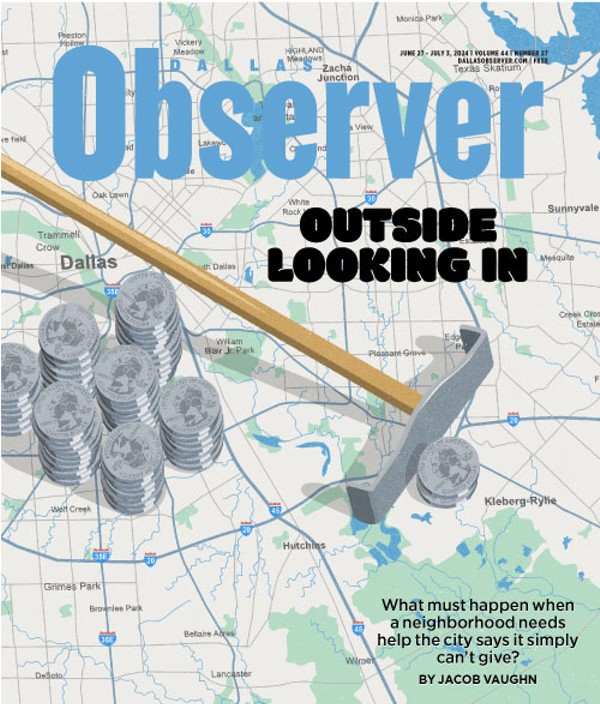These are details that professional food photographers obsess over as well, only they’re a lot better equipped to fix them. With the help of meticulous lighting setups, hours of color correction in Photoshop and a surprising amount of fishing wire, these artists are able to produce a photo that looks good enough to eat.
The availability of high-quality photos is a major priority for many restaurant owners, and it’s not just because they think they’re pretty. Research shows that professional photography can increase sales by up to 30% and individual menu items see a 6% increase in sales when there’s an accompanying photo.
To hit those numbers, they need to call in an expert. Lucky for them, Dallas is teeming with experts.
Alison McLean is a Dallas-based photographer who specializes in food and drinks. Her images are clean and sharp. The texture of the food is almost tangible. She shoots for a myriad of clients, including the Observer (particularly restaurant reviews). All of her work displays a deep love of food.
“I got my degree in [portrait] photography, but I have a passion for food,” McLean tells the Observer. “I’m a little bit of a foodie, so I've always wanted to photograph it.”
McLean typically shoots on location at restaurants and brings her studio lights with her. She prefers a little more control than natural light provides.
“I usually do a two-light setup,” she explains. “Bringing my own lighting is way more predictable. I know I'm gonna get good results every time versus relying on what lighting they might have.”
Light does more than illuminate the food. Certain setups and angles can accentuate the texture and make details pop. The right setup can highlight the bubbles in a glass of Champagne or the glossy butter on a roll.
But if you mess up, the image is flatter and murkier. Details may be hard to make out. The color might even look incorrect. The food looks boring at best and gross at worst,

This effect was achieved with some help from Photoshop. Are waffles being held to an unreasonable beauty standard?
Jack Warren
“That’s where I found a newfound love for shooting products and food and inanimate objects,” he says of Collin’s illustrative photography class, where food photography is taught. “I enjoy cooking. I will go all out when it comes to my meals. And it's one of my beliefs that when you're eating something that tastes good, it should also look good too. That’s one part of food photography I enjoy. I get to make food look beautiful.”
Warren is equally fascinated with how the wrong lighting setup can make even the most appetizing dish look unappealing.
“You could take something that should look delicious, and if you light it one way, it looks flat,” he says “No detail. It looks unappetizing. But take the same light, put it on the other side, make that detail pop and it’s a completely different image.”
Samantha Reynolds, another prominent food photographer based in Dallas and a graduate of Collin College, is the owner of Samantha Marie Photography. Like Warren, she excelled in the illustrative photography class, but she was passionate about food long before she picked up a camera.
“When I was younger, I actually wanted to be a chef, so I went to culinary school,” she says. “That was back in 2007. And, you know, life happened. I became pregnant with my first child [...] and ended up being a stay-at-home mom for 13 years.”
Reynolds’ photography career sprang from her desire to start a food blog with “higher-quality images,” and the caliber she was shooting for is now her bread and butter. Her clients include restaurants across DFW such as Knife Italian and Nikki, and publications like Local Profile.
Whereas Warren primarily shoots in a studio, Reynolds is usually on location, where clients often want naturalistic, seemingly laid-back scenes in their photos.
“They do want more lifestyle photos, rather than like a perfect product shot,” Reynolds says of her restaurant clients. “So we're gonna set up tablescapes, real people sitting and dining. You're creating those moments, while still highlighting all of those aspects of the restaurant that make it unique.”
But behind the scenes, the process of getting those photos is much more exact and painstaking. Every detail down to the tone of the shadows must be in line with the client’s branding. For example, one company maintains a subtle blue tone in their photos.
“You might want to specifically tweak your highlights and your shadows to your brand colors,” she says. “It’s never super tacky or prominent to where it's distracting, but it gives that cohesive brand recognition.”
Another popular style of photos is “floating food,” where all of the food appears to have jumped into the air. Are these shots real? Did these photographers really throw food in the air at the precisely right moment? Not exactly.
One photo in Warren’s portfolio is of “floating” waffles and, no, there wasn’t one magic shot. The photo is made up of several separate images, all individually shot. The floating food was held up by fishing wire
“I ended up having to composite together five to six images,” he says. “I got one for the background, one for the food, then a completely separate shot just for the fork and the knife.”
Even the pros have challenging shoots. Certain ambient lighting can make getting the correct balance for the photo even harder.
“I find myself frustrated when there's muddy light,” Reynolds says. ‘What I mean by that is when I have multiple light sources that are shining at different temperatures that are affecting the color of my dishes. It makes me very upset. So I'll either have someone shut off the lights, but if it's not feasible, I've got a really big umbrella that I'll just kind of cover just to block it out.”
Photographers find some kinds of food even harder to shoot.
“Shooting fast food is really difficult because it just doesn't look as appetizing to begin with,” McLean says. “Shooting rice dishes is hard to make look interesting because they're pretty flat.”
Even if you don’t have access to light kits or a studio, there are still things you can do to up your iPhone food photography game.
“Run towards natural light,” says Reynolds "Bring it outside. Find a window.”
McLean will sometimes play with her food to get her desired effect.
“A lot of times I'll rearrange a dish,” she says. “I might arrange it almost kind of like having a sculpture or a flat lay or a piece of 3-D art [...] Sometimes an employee can be a hand model and hold it in an interesting way.”
And if all else fails, you can always take a class. We hear there’s one at Collin College that has a pretty good track record.

